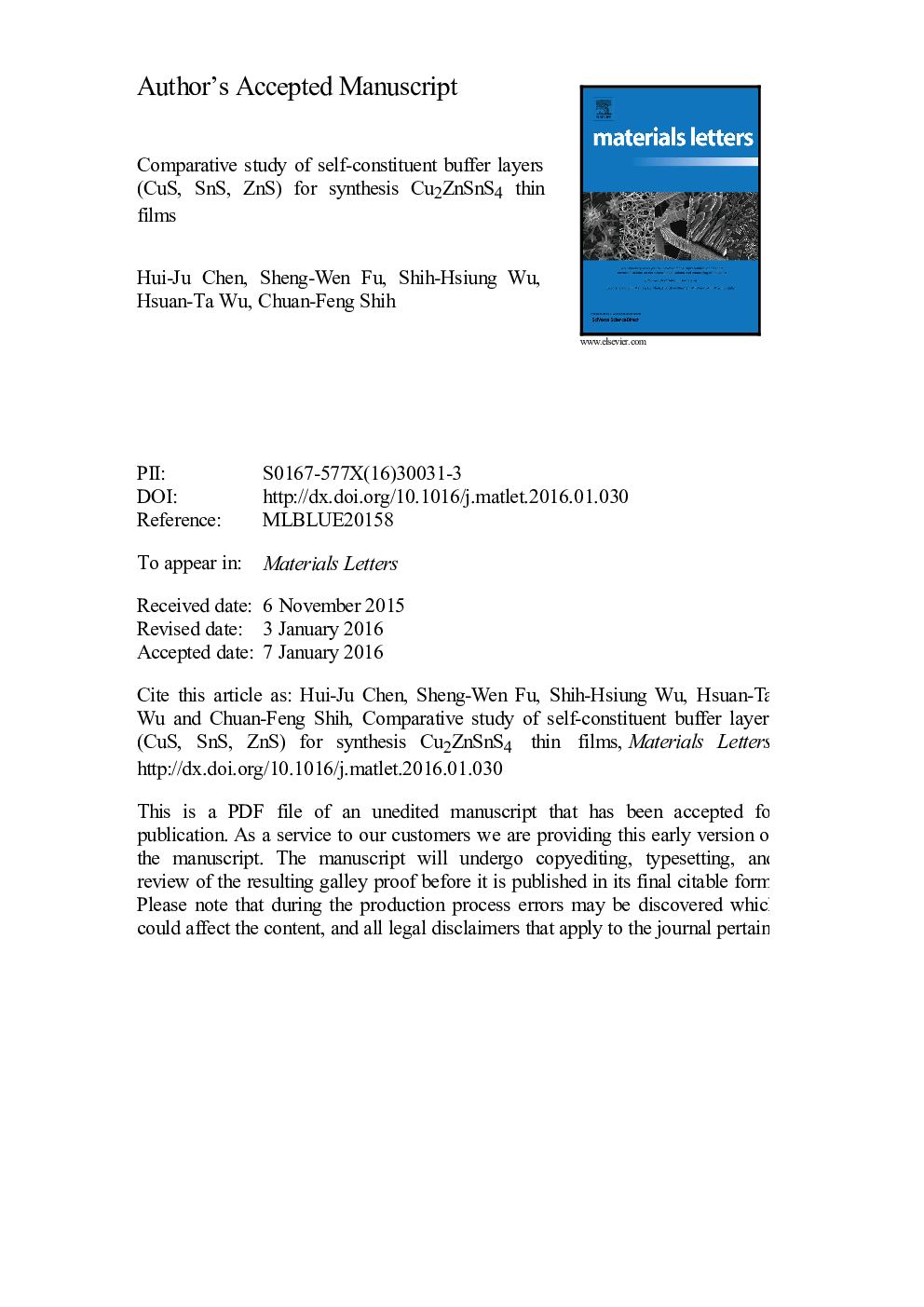| Article ID | Journal | Published Year | Pages | File Type |
|---|---|---|---|---|
| 8017519 | Materials Letters | 2016 | 10 Pages |
Abstract
Cu2ZnSnS4 (CZTS) is a promising absorber material because of its earth abundant and non-toxic constituents. The major challenge for synthesis the high-efficiency CZTS solar cell is the high-density voids and secondary phases at the interface of the CZTS absorber and the Mo back contact. To overcome this problem, we comparatively study the effect of inserting a self-constituent buffer layer such as CuS, SnS and ZnS between the CZTS and Mo substrate. Influences of these buffer materials on the phase purity, crystallinity, interface quality and elementary segregation of the CZTS films made by metal precursors were presented. A crack-free, pinhole-free, and high quality CZTS thin film was obtained by insertion of a SnS buffer layer.
Keywords
Related Topics
Physical Sciences and Engineering
Materials Science
Nanotechnology
Authors
Hui-Ju Chen, Sheng-Wen Fu, Shih-Hsiung Wu, Hsuan-Ta Wu, Chuan-Feng Shih,
